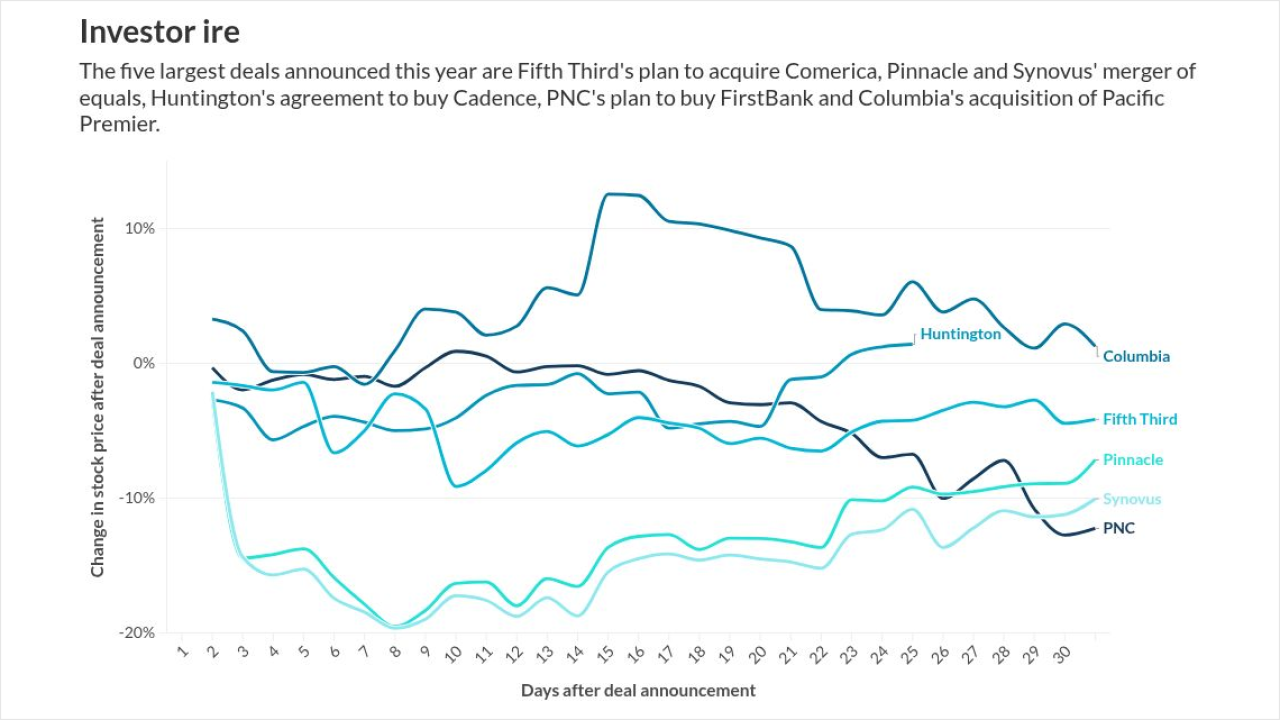
Morgan Stanley's clients may finally be getting used to widespread uncertainty surrounding tariffs and other Trump administration policies.
"Boardrooms appear more accepting of ongoing uncertainty broadly," Morgan Stanley CEO Ted Pick said during a call with investors Wednesday morning. "My sense in recent weeks is that if the cadence of
Over the last month, Morgan Stanley has seen strategic activity "really start to pick up," Pick said, noting that clients have been "quite aggressive" on the acquisition front.
"We are seeing real interest on the buy side from both corporates and from strategics. And clearly, the fact that an IPO market on the back end is working means that the value chain seems to be in pretty good shape," Pick said. "If we continue along into the fall with what we saw in the last month, it should be a quite strong second half going to 2026."
The New York-based bank is also looking forward to a looser regulatory regime, including a less strict
"The 15-year dam is breaking," Pick said, referencing the
During the second quarter, Morgan Stanley reported net income of $3.5 billion, or $2.13 per diluted share, an increase from $3.1 billion, or $1.82 per diluted share in the same reporting period last year. Analysts had expected $3.1 billion, or $1.96 per diluted share.
Net revenue came in at $16.8 billion, a 12% year-over-year increase and ahead of analysts' $16 billion estimate, according to S&P Capital IQ.
Analysts' hailed the bank's performance as solid, noting that most key metrics beat consensus estimates.
HSBC analyst Saul Martinez called the quarter "mostly positive" in a research note Wednesday morning. He noted that Morgan Stanley reported higher-than-expected earnings in its institutional securities business, buoyed by strong markets income and investment banking fees that were higher than forecast, though also less robust than those reported by some
Institutional Securities revenue rose 9% to $7.6 billion, driven by a 23% jump in equity net revenue and a 9% increase in fixed income revenue, partially offset by a 5% decrease in investment revenues. Investment management business revenues rose 14% to $1.6 billion.
The wealth management business was another bright spot, according to Martinez. That unit reported $7.8 billion in net revenues, a 15% jump from the prior year, driven by higher asset management revenues and transactional revenues.
Also during the second quarter, Morgan Stanley's compensation expenses rose 11%. Noncompensation expenses jumped 9%.
The firm posted an efficiency ratio of 71%, slightly better than the 72% efficiency ratio in the second quarter of 2024. The bank's return on tangible common equity was 18.2%, an improvement from 17.5%.
The results highlighted the strength of Morgan Stanley's diversified business model, Moody's Ratings Senior Vice President Warren Kornfeld said in a statement.
"Capitalization remains solid, with a 15% CET1 ratio. However, given the firm's sizable current CET1 capital buffer and the potential for deregulation, we expect capitalization levels to decline over time — a credit negative," Kornfeld said.
Morgan Stanley's provision for credit losses, clocked in at $196 million, more than double of the $76 million in provisions recorded in the second quarter of last year. The bank cited a "moderately weaker" macroeconomic outlook, growth in its corporate loan portfolio and secured lending facilities and a higher assessment on specific loans.
Shares in Morgan Stanley declined in early morning trading Wednesday, falling $3.18%, or $4.50, to $137.09 as of 12:07 p.m. in New York.
The firm also said that it bought back $1 billion worth of stock, reauthorized a multiyear share repurchase program of up to $20 billion beginning in Q3 2025 without a set expiration date and increased its stock dividend to $1 per share.





